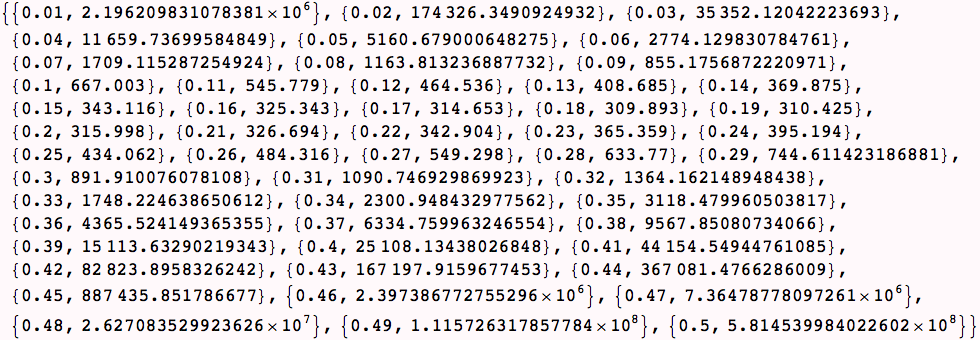
Elements of Mathematica Programs
Mathematica can be used in the same fashion as a traditional programming language, such a fortran or C. For frequently used programs or computationally intensive applications, Mathematica is not the best programming language choice, but it can be very effective as a way to test out ideas or generate a single numerical result.
Evaluating a sequence of instrutions (;;;)

![]()
![]()
Note above that line breaks without ";" are points where the instructions get executed. This three-line sequence has five executions and produces two lines of output and the instructions get executed sequentially.
![]()
![]()
![]()
![]()
![]()
In this case, Do does not produce screen output. The following will and is a simple illustration of how formatted output can be programmed:
![]()
![]()
![]()
![]()
![]()
![]()

![]()
![]()
![]()
![]()
![]()
![]()
![]()
![]()
Note above that we have asked Mathematica to create a list of two-element lists...

![]()
![]()


In the instruction above, note that the variable "datatable" is a list. In Mathematica, variables can be numbers, expressions, lists, plots, ... We will see that this feature is very useful.
| Created by Wolfram Mathematica 6.0 (06 September 2007) |